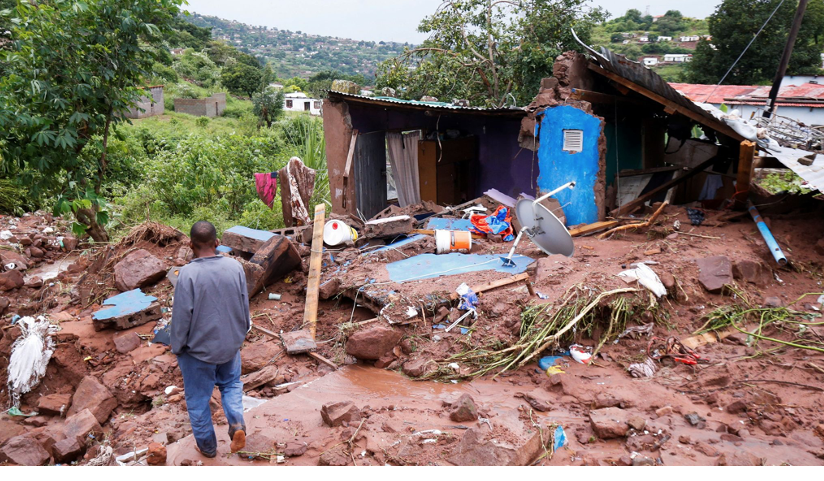CommentsACCORDING TO LIZ - People are starting to look forward to the 2028 Olympics, as the debate rages on about the homeless.
Based on current levels of construction, only a small minority of them will be housed in six years. So the question for today is: Where will Los Angeles hide the homeless when the Olympics come to town?
This, and how it is done, is even more of a priority in light of the stories coming out of South Africa this week.
In 2009, when Durban on South Africa’s eastern coast was preparing to welcome the world to the World Cup, it cleared the urban areas of tin shacks that would be in view of tourists and resettled their residents into a flood-prone area south of the city.
Temporarily.
Thirteen years and four floods later, the news media is showing scenes of stunning devastation. There are 448 known dead in flooding, mudslides and collapsed housing. All because the Durbin city government opted for out-of-sight out-of-mind. (Photo above)
Los Angeles faces many potential disasters that would disproportionately impact those living on the street. In addition to floods and mudslides, we have heatwaves, riots, earthquakes, wind events, drought, and epidemics.
What will the next earthquake bring? Freeways collapsing on tents? Blocks of concrete shaken loose from building façades pummeling the street people below?
Floods washing belongings from sidewalks? Mudslides in the arroyos sweeping encampments away?
How many people without the resources for shelter and medical care have to die from heat exhaustion and dehydration before the City acts?
Climate change is an existential problem and the results are punishing us with the most vulnerable the most at risk.
On top of Covid, the City’s unhoused have been diagnosed with typhus, tuberculosis, trench fever, hepatitis, as well as conditions related to alcohol and drug abuse, depression and other mental illnesses, and acute malnutrition which leave them more vulnerable in any disaster, natural or manmade.
Before Los Angeles was known for its homeless, it was known for its movie industry. Makeup may be able to cover the cracks in the face of an aging actress but there is nothing that will be able to hide the cracks in the social fabric of Los Angeles unless we, as a people, take action to change the narrative of our perception the homeless from “them” to “us”.
In a sentiment also ascribed to leaders from Thomas Jefferson to Mohandas Gandhi and Pope Francis, Hubert Humphrey spoke about the treatment of the weakest members of society being a direct reflection on their government.
And the government is supposed to answer to we-the-people.
We are our brothers’ keepers.
Like us, many of those who live on the streets are part of the neighborhoods in which they live. They would like jobs but face challenges in finding and keeping them; those that have them can’t provide first, last and damage deposits near where they work.
Those afflicted with substance abuse and mental health issues tend to grab the headlines but all of us want better health but our medical system is based on profiteering not holistic living.
People want a hand up, not a hand out. And improving life for our homeless neighbors will improve life for us all. As they say, a rising tide floats all boats.
So we must all take whatever it takes, spend whatever is needed to SOLVE the problem, not sweep it under the rug, over the cliff, or into the path of the next flood.
We have six years before the Olympics to make a difference.
(Liz Amsden is an activist from Northeast Los Angeles with opinions on much of what goes on in our lives. She has written extensively on the City's budget and services as well as her many other interests and passions. In her real life she works on budgets for film and television where fiction can rarely be as strange as the truth of living in today's world.)






